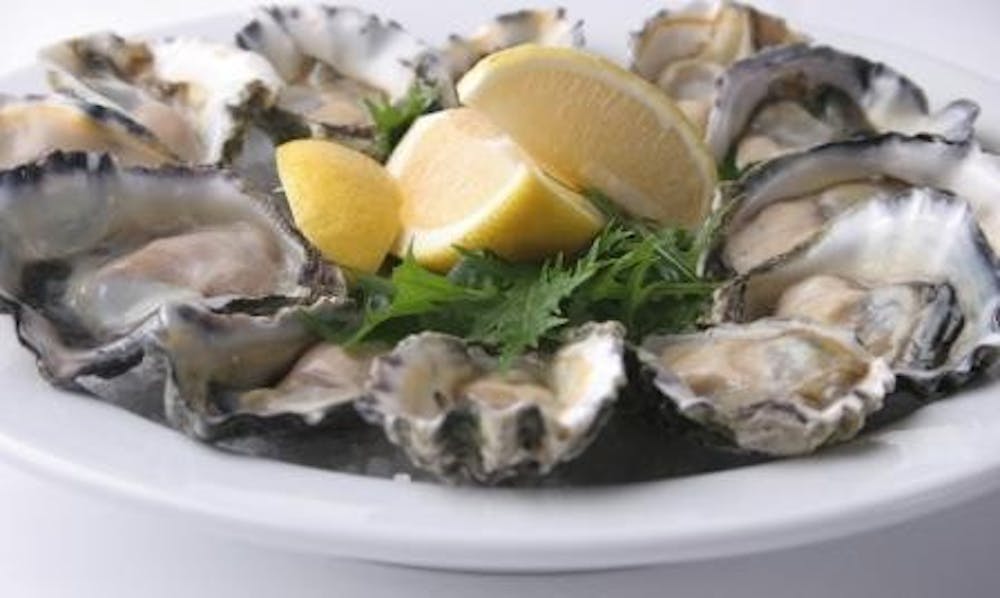Instead of traveling south for spring break, I went slightly north to Boston, where I indulged in one of my favorite sea foods — oysters.
My love of oysters is quite strange to me because I’m intensely picky about food textures. I tend to avoid anything that’s slippery or mushy as, obviously, thoughts of slime or bodily fluids aren’t far away. But perhaps the oyster’s aphrodisiacal properties have worked to help me subconsciously overcome my distaste.
Until now, my contact with oysters has been severely limited because the closest body of water to Indiana, Lake Michigan, has nothing to offer but invasive mussels and industrial waste. Most of the oysters we see in Indiana have been fried and breaded beyond recognition or crammed into a can. You can get them on the half shell at Red Lobster, but prices tend to increase the farther the oyster has to travel from home.
My sojourn in Boston came right at the end of oyster harvesting season, which usually ends in late March or early April on the East Coast. Contrary to the old wives’ tale that warns against eating oysters outside of months that contain an “R,” oyster season has nothing to do with safety.
Although some bacteria can be more present in the water during warmer months, the prohibition against eating oysters in the summer mostly has to do with the organism’s life cycle. Oysters breed during May, June, July and August, and spawning oysters secrete chemicals that make their meat bland.
The type of oyster most commonly found on the East Coast is the Virginica Oyster, which ranges from Nova Scotia to South America. The ones served at the oyster houses in Boston most likely came from Duxbury or Wellfleet, the two biggest oyster-producing regions in Cape Cod Bay. These oysters are grown in salt marshes, which gives them a brinier taste than their counterparts on the West Coast.
Virginica oysters — or at least the ones I tasted — have slightly tangy lowlights. The tanginess most likely comes from the oyster’s high mineral content, which mostly consists of zinc, iron, calcium and selenium and is a hallmark of Virginica oysters.
And despite the unappetizing appearance, I would describe the texture as meaty and smooth, as any slipperiness disappears once the oyster enters your mouth.
My restaurant of choice was the Union Oyster House, which bills itself as “America’s Oldest Restaurant.” It’s located on the Freedom Trail and has a bit of a tourist-trap vibe — but there were a lot of locals having lunch at the bar when I was there, so if it’s good enough for them, it’s good enough for me.
Travelers who would like a more upscale dining experience can visit Neptune Oyster, which is close to the center of town but whose raw bar doesn’t open until 10:30 p.m., or B & G Oysters, whose raw oysters go for $2 to $3 each. Oysters sell for a set market price at most places, but the price of other entrees varies widely between these three restaurants.
University Eats
Fresh oysters are the pearls of Boston’s seafood market

Get stories like this in your inbox
Subscribe





